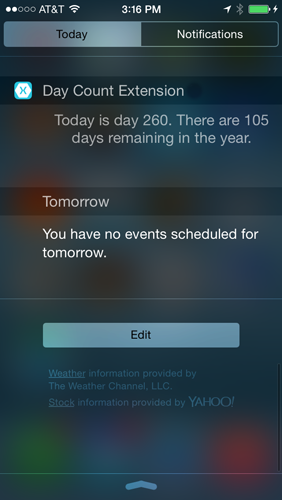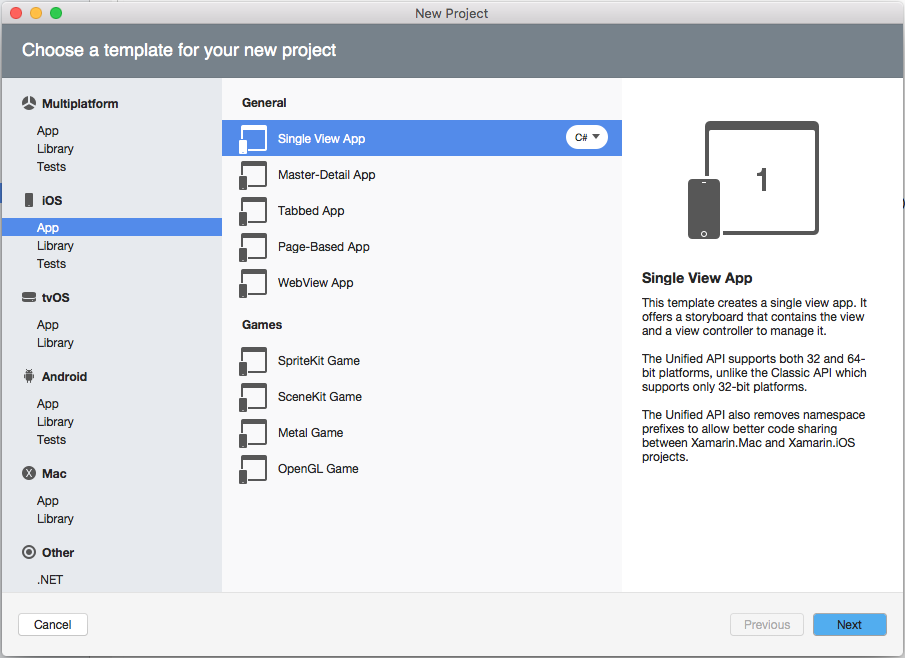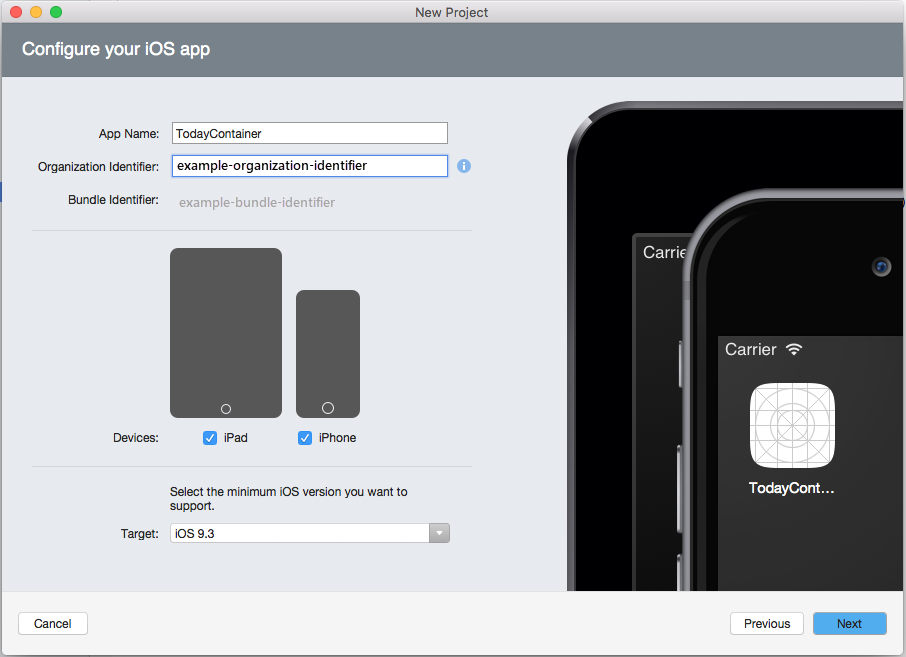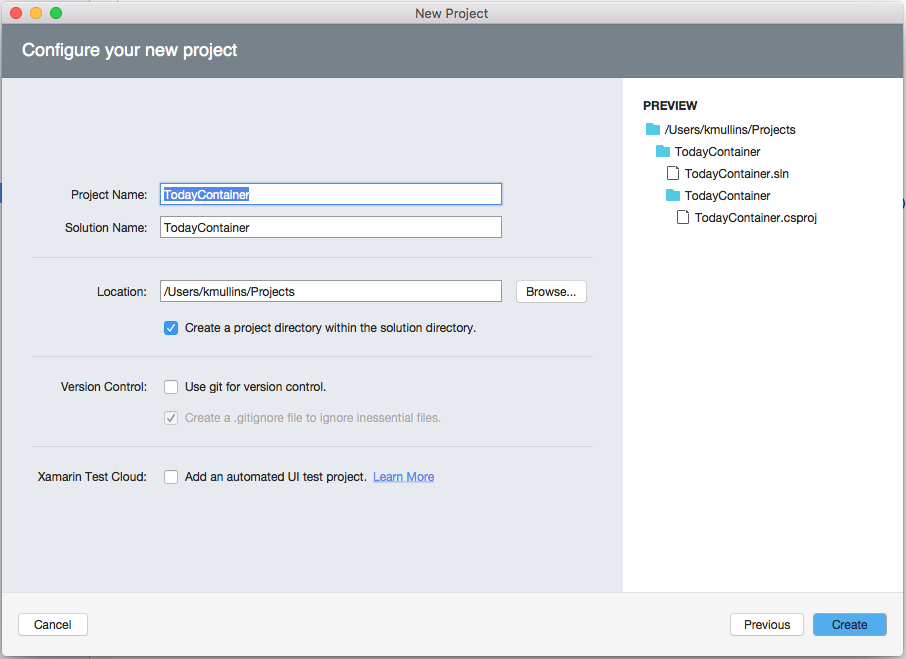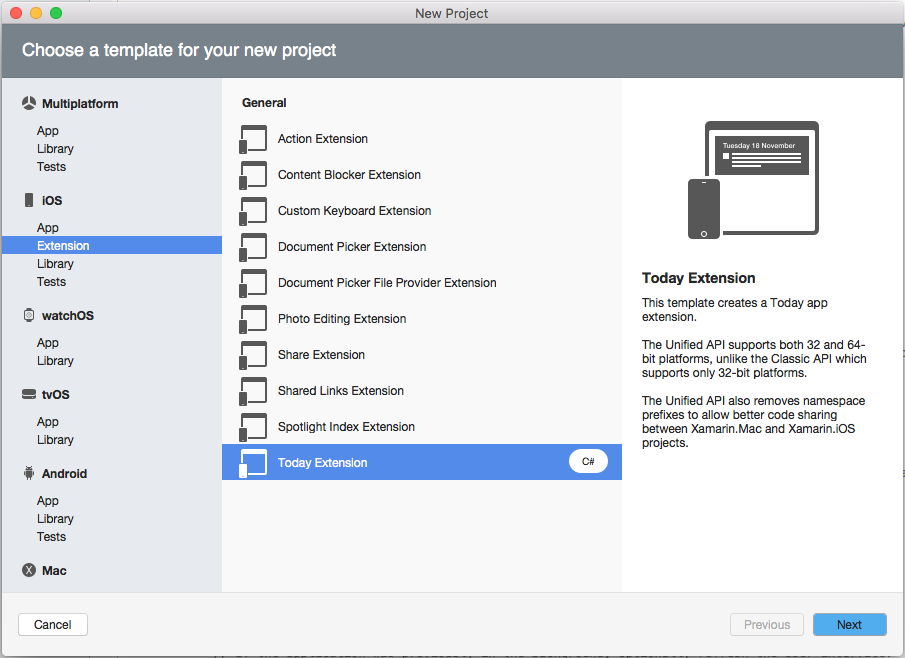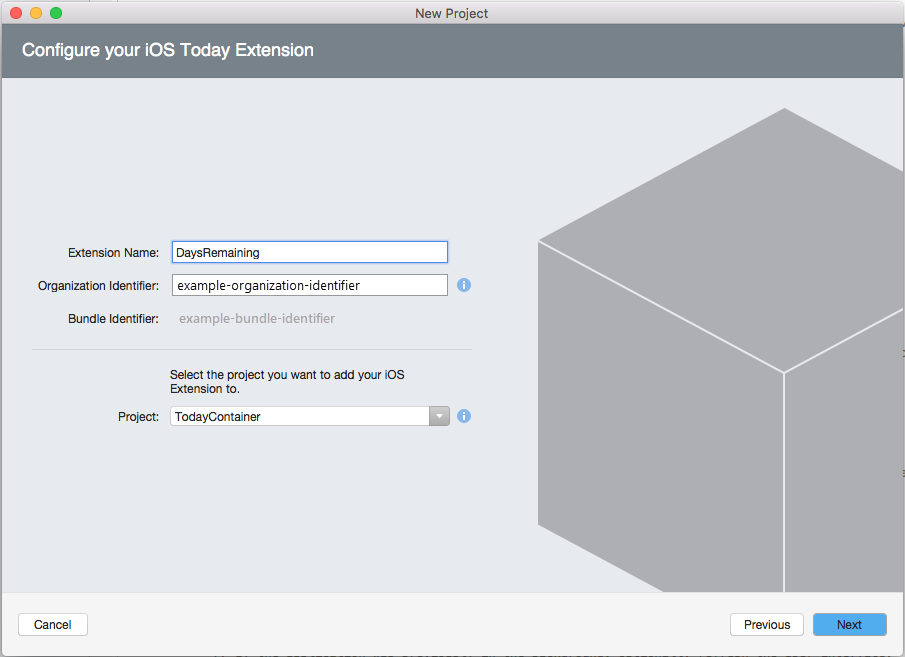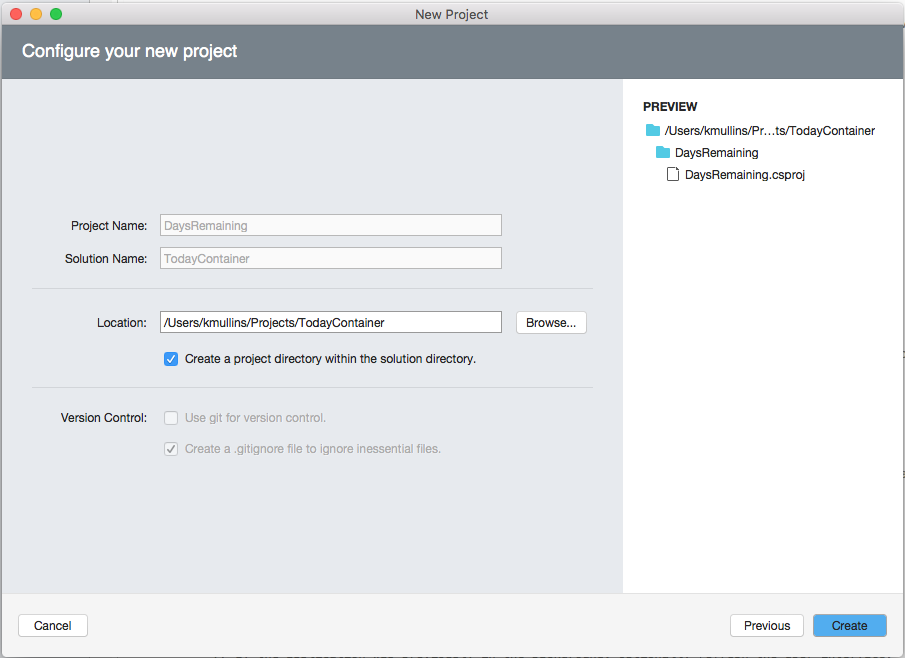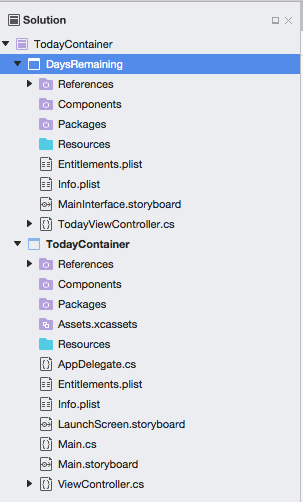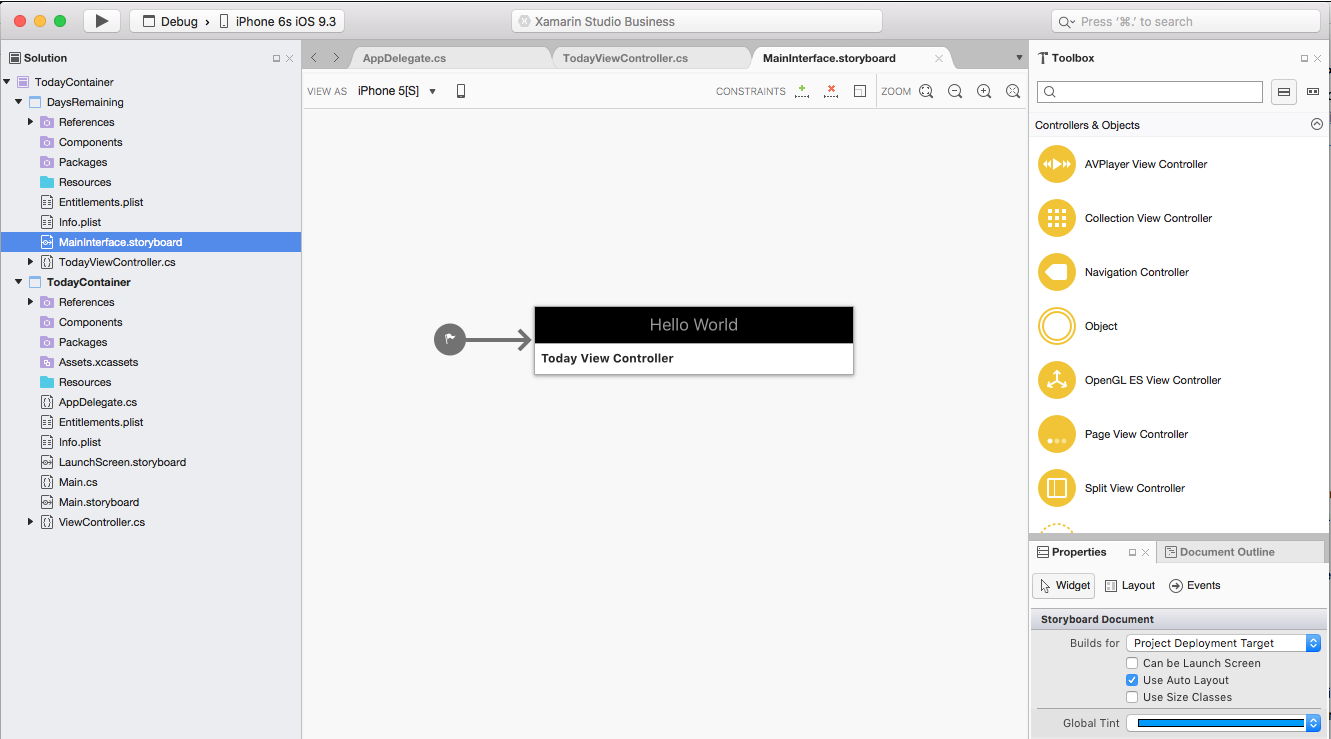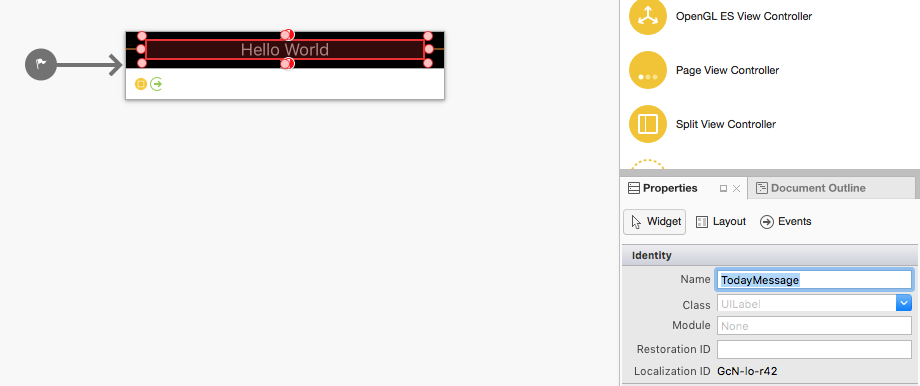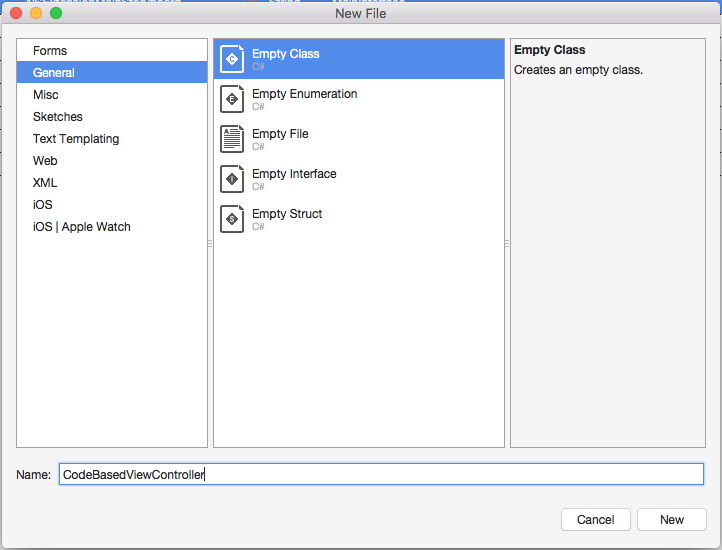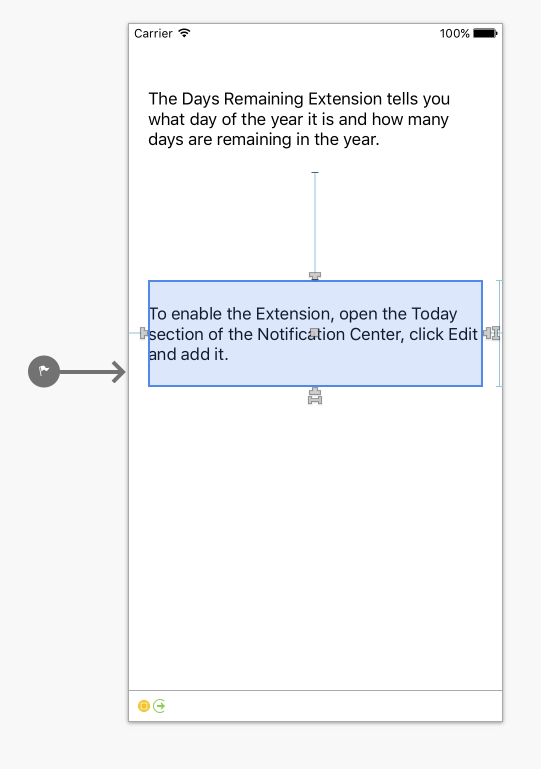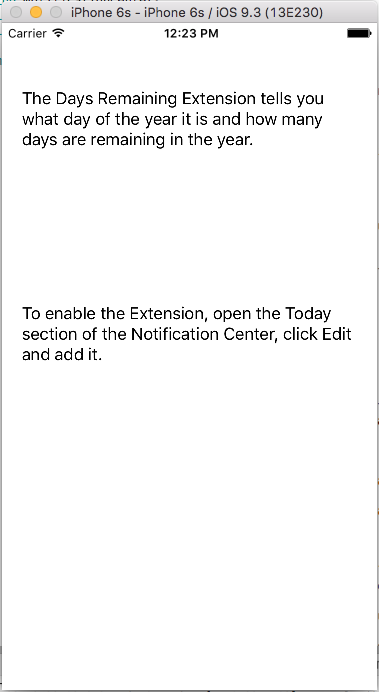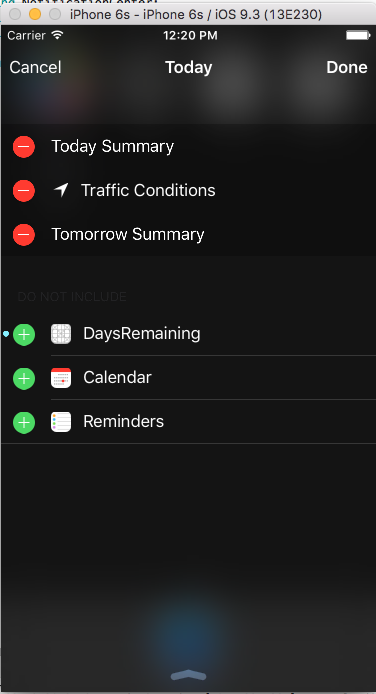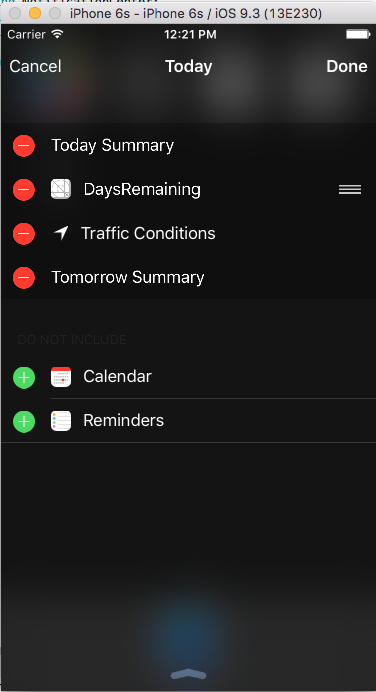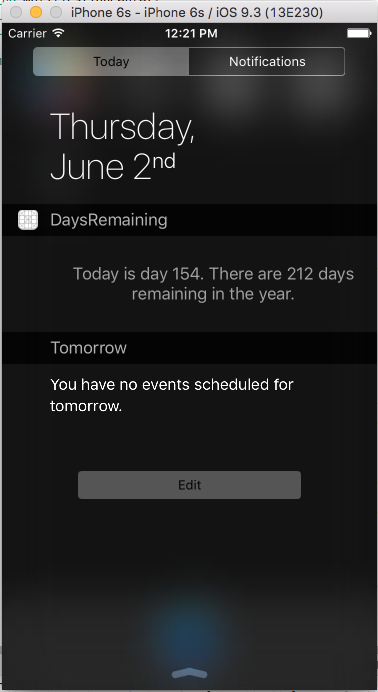Note
Access to this page requires authorization. You can try signing in or changing directories.
Access to this page requires authorization. You can try changing directories.
Creating Extensions in iOS video
Extensions, as introduced in iOS 8, are specialized UIViewControllers that are presented by iOS inside standard contexts such as within the Notification Center, as custom keyboard types requested by the user to perform specialized input or other contexts like editing a photo where the Extension can provide special effect filters.
All Extensions are installed in conjunction with a Container app (with both elements written using the 64-bit Unified APIs) and are activated from a particular Extension Point in a Host app. And since they will be used as supplements to existing system functions, they must be high performance, lean, and robust.
Extension points
| Type | Description | Extension Point | Host App |
|---|---|---|---|
| Action | Specialized editor or viewer for a particular media type | com.apple.ui-services |
Any |
| Document Provider | Allows app to use a remote document store | com.apple.fileprovider-ui |
Apps using a UIDocumentPickerViewController |
| Keyboard | Alternate keyboards | com.apple.keyboard-service |
Any |
| Photo Editing | Photo manipulation and editing | com.apple.photo-editing |
Photos.app editor |
| Share | Shares data with social networks, messaging services, etc. | com.apple.share-services |
Any |
| Today | “Widgets” that appear on the Today screen or Notification Center | com.apple.widget-extensions |
Today and Notification Center |
Additional extension points were added in iOS 10 and iOS 12. You can find the complete table of all supported types in the iOS App Extension Programming Guide.
Limitations
Extensions have a number of limitations, some of which are universal to all types (for instance, no type of Extension can access the cameras or microphones) while other types of Extension may have specific limitations on their usage (for instance, custom keyboards cannot be used for secure data entry fields such as for passwords).
The universal limitations are:
- The Health Kit and Event Kit UI Frameworks are not available
- Extensions cannot use extended background modes
- Extensions cannot access the device’s cameras or microphones (although they may access existing media files)
- Extensions cannot receive Air Drop data (although they can transmit data via Air Drop)
- UIActionSheet and UIAlertView are not available; extensions must use UIAlertController
- Several members of UIApplication are unavailable: UIApplication.SharedApplication, UIApplication.OpenUrl, UIApplication.BeginIgnoringInteractionEvents and UIApplication.EndIgnoringInteractionEvents
- iOS enforces a 16 MB memory usage limit on Today's extensions.
- By default keyboard extensions don't have access to the network. This affects debugging on device (the restriction is not enforced in the simulator), since Xamarin.iOS requires network access for debugging to work. It's possible to request network access by setting the
Requests Open Accessvalue in the project's Info.plist toYes. Please see Apple's Custom Keyboard Guide for more information about keyboard extension limitations.
For individual limitations, please see Apple's App Extension Programming Guide.
Distributing, installing, and running extensions
Extensions are distributed from within a container app, which, in turn is submitted and distributed via the App Store. The Extension(s) distributed with the app are installed at that point, but the user must enable each Extension explicitly. The different types of Extensions are enabled in different ways; several require the user to navigate to the Settings app and enable them from there. While others are enabled at point of use, such as enabling a Sharing Extension when sending a photo.
The app in which the Extension is used (where the user encounters the Extension Point) is referred to as the Host app, since it is the app that hosts the Extension when it executes. The app that installs the Extension is the Container app, because it is the app that contained the Extension when it was installed.
Typically, the container app describes the extension and walks the user through the process of enabling it.
Debug and release versions of extensions
Memory limits for running app extensions are significantly lower than the memory limits applied to a foreground app. Simulators running iOS have less restrictions applied to extensions, and you can execute your extension without any issues. However, running the same extension on a device can lead to unexpected results, including the extension crashing or being aggressively terminated by the system. Therefore, ensure you build and test the extension on a device before shipping it.
You should ensure that the following settings are applied to the container project and all referenced extensions:
- Build a application package in Release configuration.
- In the iOS Build project settings, set the Linker behavior option to Link Framework SDKs Only or Link All.
- In the iOS Debug project settings, uncheck the Enable debugging and Enable profiling option.
Extension lifecycle
An Extension can be as simple as a single UIViewController or more complex Extensions that present multiple screens of UI. When the user encounters an Extension Points (such as when sharing an image), they will have an opportunity to choose from the Extensions registered for that Extension Point.
If they choose one of your app's Extensions, its UIViewController will be instantiated and begin the normal View Controller lifecycle. However, unlike a normal app, which are suspended but not generally terminated when the user finishes interacting with them, Extensions are loaded, executed, and then terminated repeatedly.
Extensions can communicate with their Host apps via an NSExtensionContext object. Some Extensions have operations that receive asynchronous callbacks with the results. These callbacks will be executed on background threads and the Extension must take this into consideration; for instance, by using NSObject.InvokeOnMainThread if they want to update the user interface. See the Communicating with the Host App section below for more details.
By default, Extensions and their container apps can not communicate, despite being installed together. In some cases, the Container app is essentially an empty "shipping" container whose purpose is served once the Extension is installed. However, if circumstances dictate, the Container app and the Extension may share resources from a common area. Additionally, a Today Extension may request its Container app to open a URL. This behavior is shown in the Event Countdown Widget.
Creating an extension
Extensions (and their Container apps) must be 64-bit binaries and built using the Xamarin.iOS Unified APIs. When developing an Extension, your solutions will contain at least two projects: the container app and one project for each Extension the container provides.
Container app project requirements
The Container app used to install the Extension has the following requirements:
- It must maintain a reference to the Extension project.
- It must be a complete app (must be able to launch and run successfully) even if it does nothing more than provide a way to install an Extension.
- It must have a Bundle Identifier that is the basis for the Bundle Identifier of the Extension project (see the section below for more details).
Extension project requirements
Additionally, the Extension's project has the following requirements:
It must have a Bundle Identifier that starts with its Container app's Bundle Identifier. For example, if the Container app's has a Bundle Identifier of
com.myCompany.ContainerApp, the Extension's identifier might becom.myCompany.ContainerApp.MyExtension:
It must define the key
NSExtensionPointIdentifier, with an appropriate value (such ascom.apple.widget-extensionfor a Today Notification Center widget), in itsInfo.plistfile.It must also define either the
NSExtensionMainStoryboardkey or theNSExtensionPrincipalClasskey in itsInfo.plistfile with an appropriate value:- Use the
NSExtensionMainStoryboardkey to specify the name of the Storyboard that presents the main UI for the Extension (minus.storyboard). For example,Mainfor theMain.storyboardfile. - Use the
NSExtensionPrincipalClasskey to specify the class that will be initialized when the Extension is started. The value must match the Register value of yourUIViewController:

- Use the
Specific types of Extensions may have additional requirements. For instance, a Today or Notification Center Extension’s principal class must implement INCWidgetProviding.
Important
If you start your project using one the Extensions templates provided by Visual Studio for Mac, most (if not all) these requirements will be provided and met for you automatically by the template.
Walkthrough
In following walkthrough, you will create an example Today widget that calculates the day and number of days remaining in the year:
Creating the solution
To create the required solution, do the following:
First, create a new iOS, Single View App project and click the Next button:
Call the project
TodayContainerand click the Next button:Verify the Project Name and SolutionName and click the Create button to create the solution:
Next, in the Solution Explorer, right-click on the Solution and add a new iOS Extension project from the Today Extension template:
Call the project
DaysRemainingand click the Next button:Review the project and click the Create button to create it:
The resulting Solution should now have two projects, as shown here:
Creating the extension user interface
Next, you will need to design the interface for your Today widget. This can either be done using a Storyboard or by creating the UI in code. Both methods will be covered below in detail.
Using storyboards
To build the UI with a Storyboard, do the following:
In the Solution Explorer, double-click the Extension project's
Main.storyboardfile to open it for editing:Select the Label that was automatically added to the UI by template and give it the Name
TodayMessagein the Widget tab of the Properties Explorer:Save the changes to the Storyboard.
Using code
To build the UI in code, do the following:
In the Solution Explorer, select the DaysRemaining project, add a new class and call it
CodeBasedViewController:Again, in the Solution Explorer, double-click Extension's
Info.plistfile to open it for editing:Select the Source View (from the bottom of the screen) and open the
NSExtensionnode:Remove the
NSExtensionMainStoryboardkey and add aNSExtensionPrincipalClasswith the valueCodeBasedViewController:Save your changes.
Next, edit the CodeBasedViewController.cs file and make it look like the following:
using System;
using Foundation;
using UIKit;
using NotificationCenter;
using CoreGraphics;
namespace DaysRemaining
{
[Register("CodeBasedViewController")]
public class CodeBasedViewController : UIViewController, INCWidgetProviding
{
public CodeBasedViewController ()
{
}
public override void ViewDidLoad ()
{
base.ViewDidLoad ();
// Add label to view
var TodayMessage = new UILabel (new CGRect (0, 0, View.Frame.Width, View.Frame.Height)) {
TextAlignment = UITextAlignment.Center
};
View.AddSubview (TodayMessage);
// Insert code to power extension here...
}
}
}
Note that the [Register("CodeBasedViewController")] matches the value that you specified for the NSExtensionPrincipalClass above.
Coding the extension
With the User Interface created, open either the TodayViewController.cs or the CodeBasedViewController.cs file (based of the method used to create the User Interface above), change the ViewDidLoad method and make it look like the following:
public override void ViewDidLoad ()
{
base.ViewDidLoad ();
// Calculate the values
var dayOfYear = DateTime.Now.DayOfYear;
var leapYearExtra = DateTime.IsLeapYear (DateTime.Now.Year) ? 1 : 0;
var daysRemaining = 365 + leapYearExtra - dayOfYear;
// Display the message
if (daysRemaining == 1) {
TodayMessage.Text = String.Format ("Today is day {0}. There is one day remaining in the year.", dayOfYear);
} else {
TodayMessage.Text = String.Format ("Today is day {0}. There are {1} days remaining in the year.", dayOfYear, daysRemaining);
}
}
If using the code based User Interface method, replace the // Insert code to power extension here... comment with the new code from above. After calling the base implementation (and inserting a Label for the code based version), this code does a simple calculation to get the day of the year and how many days are remaining. Then it displays the message in the Label (TodayMessage) that you created in the UI design.
Note how similar this process is to the normal process of writing an app. An Extension's UIViewController has the same lifecycle as a View Controller in an app, except Extensions do not have background modes and are not suspended when the user is finished using them. Instead, Extensions are repeatedly initialized and de-allocated as required.
Creating the container app user interface
For this walkthrough, the container app is simply used as a method to ship and install the Extension and provides no functionality of its own. Edit the TodayContainer's Main.storyboard file and add some text defining the Extension's function and how to install it:
Save the changes to the Storyboard.
Testing the extension
To test your Extension in the iOS Simulator, run the TodayContainer app. The container's main view will be displayed:
Next, hit the Home button in the Simulator, swipe down from the top of the screen to open the Notification Center, select the Today tab and click the Edit button:
Add the DaysRemaining Extension to the Today view and click the Done button:
The new widget will be added to the Today view and the results will be displayed:
Communicating with the host app
The example Today Extension you created above does not communicate with its host app (the Today screen). If it did, it would use the ExtensionContext property of the TodayViewController or CodeBasedViewController classes.
For Extensions that will receive data from their host apps, the data is in the form of an array of NSExtensionItem objects stored in the InputItems property of the ExtensionContext of the Extension's UIViewController.
Other Extensions, such as Photo Editing extensions, may distinguish between the user completing or canceling usage. This will be signaled back to the host app via the CompleteRequest and CancelRequest methods of ExtensionContext property.
For more information, please see Apple's App Extension Programming Guide.
Communicating with the parent app
An App Group allows different applications (or an application and its extensions) to access a shared file storage location. App Groups can be used for data like:
For more information, please see the App Groups section of our Working with Capabilities documentation.
MobileCoreServices
When working with extensions, use a Uniform Type Identifier (UTI) to create and manipulate data that is exchanged between the app, other apps and/or services.
The MobileCoreServices.UTType static class defines the following helper properties that relate to Apple's kUTType... definitions:
kUTTypeAlembic-AlembickUTTypeAliasFile-AliasFilekUTTypeAliasRecord-AliasRecordkUTTypeAppleICNS-AppleICNSkUTTypeAppleProtectedMPEG4Audio-AppleProtectedMPEG4AudiokUTTypeAppleProtectedMPEG4Video-AppleProtectedMPEG4VideokUTTypeAppleScript-AppleScriptkUTTypeApplication-ApplicationkUTTypeApplicationBundle-ApplicationBundlekUTTypeApplicationFile-ApplicationFilekUTTypeArchive-ArchivekUTTypeAssemblyLanguageSource-AssemblyLanguageSourcekUTTypeAudio-AudiokUTTypeAudioInterchangeFileFormat-AudioInterchangeFileFormatkUTTypeAudiovisualContent-AudiovisualContentkUTTypeAVIMovie-AVIMoviekUTTypeBinaryPropertyList-BinaryPropertyListkUTTypeBMP-BMPkUTTypeBookmark-BookmarkkUTTypeBundle-BundlekUTTypeBzip2Archive-Bzip2ArchivekUTTypeCalendarEvent-CalendarEventkUTTypeCHeader-CHeaderkUTTypeCommaSeparatedText-CommaSeparatedTextkUTTypeCompositeContent-CompositeContentkUTTypeConformsToKey-ConformsToKeykUTTypeContact-ContactkUTTypeContent-ContentkUTTypeCPlusPlusHeader-CPlusPlusHeaderkUTTypeCPlusPlusSource-CPlusPlusSourcekUTTypeCSource-CSourcekUTTypeData-DatabasekUTTypeDelimitedText-DelimitedTextkUTTypeDescriptionKey-DescriptionKeykUTTypeDirectory-DirectorykUTTypeDiskImage-DiskImagekUTTypeElectronicPublication-ElectronicPublicationkUTTypeEmailMessage-EmailMessagekUTTypeExecutable-ExecutablekUTExportedTypeDeclarationsKey-ExportedTypeDeclarationsKeykUTTypeFileURL-FileURLkUTTypeFlatRTFD-FlatRTFDkUTTypeFolder-FolderkUTTypeFont-FontkUTTypeFramework-FrameworkkUTTypeGIF-GIFkUTTypeGNUZipArchive-GNUZipArchivekUTTypeHTML-HTMLkUTTypeICO-ICOkUTTypeIconFileKey-IconFileKeykUTTypeIdentifierKey-IdentifierKeykUTTypeImage-ImagekUTImportedTypeDeclarationsKey-ImportedTypeDeclarationsKeykUTTypeInkText-InkTextkUTTypeInternetLocation-InternetLocationkUTTypeItem-ItemkUTTypeJavaArchive-JavaArchivekUTTypeJavaClass-JavaClasskUTTypeJavaScript-JavaScriptkUTTypeJavaSource-JavaSourcekUTTypeJPEG-JPEGkUTTypeJPEG2000-JPEG2000kUTTypeJSON-JSONkUTType3dObject-k3dObjectkUTTypeLivePhoto-LivePhotokUTTypeLog-LogkUTTypeM3UPlaylist-M3UPlaylistkUTTypeMessage-MessagekUTTypeMIDIAudio-MIDIAudiokUTTypeMountPoint-MountPointkUTTypeMovie-MoviekUTTypeMP3-MP3kUTTypeMPEG-MPEGkUTTypeMPEG2TransportStream-MPEG2TransportStreamkUTTypeMPEG2Video-MPEG2VideokUTTypeMPEG4-MPEG4kUTTypeMPEG4Audio-MPEG4AudiokUTTypeObjectiveCPlusPlusSource-ObjectiveCPlusPlusSourcekUTTypeObjectiveCSource-ObjectiveCSourcekUTTypeOSAScript-OSAScriptkUTTypeOSAScriptBundle-OSAScriptBundlekUTTypePackage-PackagekUTTypePDF-PDFkUTTypePerlScript-PerlScriptkUTTypePHPScript-PHPScriptkUTTypePICT-PICTkUTTypePKCS12-PKCS12kUTTypePlainText-PlainTextkUTTypePlaylist-PlaylistkUTTypePluginBundle-PluginBundlekUTTypePNG-PNGkUTTypePolygon-PolygonkUTTypePresentation-PresentationkUTTypePropertyList-PropertyListkUTTypePythonScript-PythonScriptkUTTypeQuickLookGenerator-QuickLookGeneratorkUTTypeQuickTimeImage-QuickTimeImagekUTTypeQuickTimeMovie-QuickTimeMoviekUTTypeRawImage-RawImagekUTTypeReferenceURLKey-ReferenceURLKeykUTTypeResolvable-ResolvablekUTTypeRTF-RTFkUTTypeRTFD-RTFDkUTTypeRubyScript-RubyScriptkUTTypeScalableVectorGraphics-ScalableVectorGraphicskUTTypeScript-ScriptkUTTypeShellScript-ShellScriptkUTTypeSourceCode-SourceCodekUTTypeSpotlightImporter-SpotlightImporterkUTTypeSpreadsheet-SpreadsheetkUTTypeStereolithography-StereolithographykUTTypeSwiftSource-SwiftSourcekUTTypeSymLink-SymLinkkUTTypeSystemPreferencesPane-SystemPreferencesPanekUTTypeTabSeparatedText-TabSeparatedTextkUTTagClassFilenameExtension-TagClassFilenameExtensionkUTTagClassMIMEType-TagClassMIMETypekUTTypeTagSpecificationKey-TagSpecificationKeykUTTypeText-TextkUTType3DContent-ThreeDContentkUTTypeTIFF-TIFFkUTTypeToDoItem-ToDoItemkUTTypeTXNTextAndMultimediaData-TXNTextAndMultimediaDatakUTTypeUniversalSceneDescription-UniversalSceneDescriptionkUTTypeUnixExecutable-UnixExecutablekUTTypeURL-URLkUTTypeURLBookmarkData-URLBookmarkDatakUTTypeUTF16ExternalPlainText-UTF16ExternalPlainTextkUTTypeUTF16PlainText-UTF16PlainTextkUTTypeUTF8PlainText-UTF8PlainTextkUTTypeUTF8TabSeparatedText-UTF8TabSeparatedTextkUTTypeVCard-VCardkUTTypeVersionKey-VersionKeykUTTypeVideo-VideokUTTypeVolume-VolumekUTTypeWaveformAudio-WaveformAudiokUTTypeWebArchive-WebArchivekUTTypeWindowsExecutable-WindowsExecutablekUTTypeX509Certificate-X509CertificatekUTTypeXML-XMLkUTTypeXMLPropertyList-XMLPropertyListkUTTypeXPCService-XPCServicekUTTypeZipArchive-ZipArchive
See the following example:
using MobileCoreServices;
...
NSItemProvider itemProvider = new NSItemProvider ();
itemProvider.LoadItem(UTType.PropertyList ,null, (item, err) => {
if (err == null) {
NSDictionary results = (NSDictionary )item;
NSString baseURI =
results.ObjectForKey("NSExtensionJavaScriptPreprocessingResultsKey");
}
});
For more information, please see the App Groups section of our Working with Capabilities documentation.
Precautions and considerations
Extensions have significantly less memory available to them than apps do. They are expected to perform rapidly and with minimal intrusion to the user and the app they are hosted in. However, an Extension should also provide a distinctive, useful function to the consuming app with a branded UI that allow the user to identify the Extension's developer or Container app they belong to.
Given these tight requirement, you should only deploy Extensions that have been thoroughly tested and optimized for performance and memory consumption.
Summary
This document has covered Extensions, what they are, the type of Extension Points and the known limitations imposed on an Extension by iOS. It discussed creating, distributing, installing and running Extensions and the Extension lifecycle. It provided a walkthrough of creating a simple Today widget showing two ways to create the widget's UI using either Storyboards or code. It showed how to test an extension in the iOS Simulator. Finally, it briefly discussed communicating with the Host App and a few precautions and considerations that should be taken when developing an extension.
